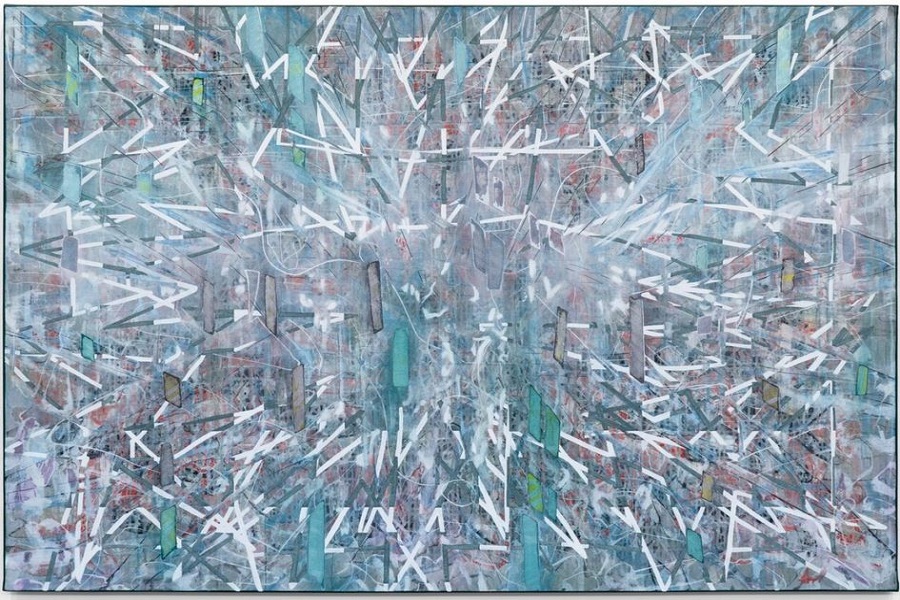Visual Art / Analogue, Jonas Balsaitis. At ANU Drill Hall Gallery to April 13. Reviewed by ROB KENNEDY.
There are several artists that use and reference technology in their works, but Jonas Balsaitis use of information imaging systems in his art is one of a kind.
A Lithuanian, Jonas Balsaitis, was born in a German refugee camp in 1948 and arrived in Australia in 1949. He studied in Melbourne to become a painter and filmmaker. His art almost defies description.
All works in this exhibition, Analogue, were curated by Oscar Capezio. Some are extremely large, over four metres square. They look like printed circuit boards or a form of coded language. But they alter the usual precision of these things through his unique artistic aspect.
They challenge the expectation of what is known as abstract art. Unlike a machine-generated product, they show elements of human imperfection. The dense, structured, rhythmically aligned patterns recall early computer punch cards or circuit boards. They ask questions about what is and what can be art.
I’m not sure there is a point to any formal analysis, because the visually challenging aspects seem to defy the usual evaluation criteria of an artwork. I could say that I am at a loss to how best describe these paintings, because they do not fit any known category of visual art.
Yet, I’ll have a go. The irregular, yet structured marks resemble digital pixels or fractals. However, there’s a painterly quality, and a dialogue between digital forms, physical material, and an artist’s conception of what art can be.
Because every painting uses synthetic polymer paint, questions arise about how the characteristics of this medium influence and shape the artist’s style. What would they look like if oils were the chosen medium?
But how does one view works of art like these? If seen in the context of our contemporary digital culture, the exhibition might be commenting on the ways in which we see a world saturated with digitally produced information. They might also be about a conversation between artist and viewer on how technology dominates our lives today, yet many of them date back to the 1970s, some even before.
Their visual repetition and slight variations in mark-making create a hypnotic or maybe even a meditative effect, which highlights the huge amount of labour in each work and intention behind the piece. Maybe they are saying look out, or we will be dominated by AI, automation, and technology.
The one film, titled Space Time Structures, 1977, consists of 48,000 frames and it is played at variable speeds. In it, images appear out of each other to disrupt the representation of reality. The accompanying soundtrack of didgeridoo and random spacey sounds fits well. In this film, his images come alive, maybe, to take on their real meaning.
Are these artworks a statement about human expression or how technology now rules us all? If either or both, this exhibition hits the mark.
Who can be trusted?
In a world of spin and confusion, there’s never been a more important time to support independent journalism in Canberra.
If you trust our work online and want to enforce the power of independent voices, I invite you to make a small contribution.
Every dollar of support is invested back into our journalism to help keep citynews.com.au strong and free.
Thank you,
Ian Meikle, editor






